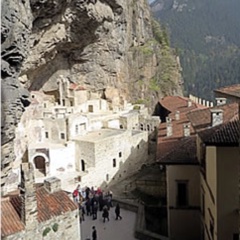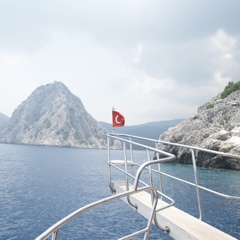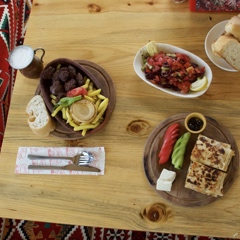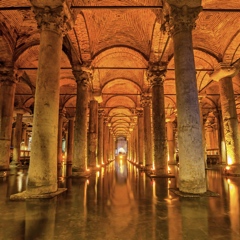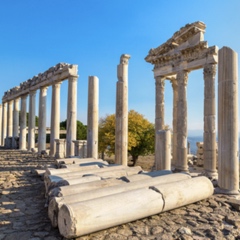As you plan your trip to Turkey, you may wonder what to wear in Istanbul, what rules exist at religious sites, and what you should pack for beach resorts. In this guide to what to wear in Turkey as a female traveler, we will explore these topics and more.
Walking on the streets in Istanbul, you'll notice a diverse range of clothing styles among women. To avoid any confusion, it's essential to note that you can dress as you would in your home country while in Turkey. There's no requirement for specific attire. What's important is that you feel comfortable and safe.
As a secular country, Turkey does not mandate Islamic dress. In fact, the majority of the population dresses in a more Western style of clothing. The prevalence of Islamic dress, particularly in Istanbul, is often due to the influx of tourists from the Middle East, not the local Turkish people. You may see some women who interpret the rules stricter and wear a burka which is a black full-body covering, with a veil (çarşaf). Dressing conservatively in Turkey is also not likely to draw attention as the country has a diverse population.
In Turkey, especially in metropolitan cities such as Istanbul, Ankara, and Izmir, you can dress the way you dress in Milan, Paris, and London. In summer resorts such as Antalya, Çeşme, and Bodrum, you can dress the way you dress in Ibiza, Miami, or the Greek islands. You will find most women, particularly younger Turkish women, dressed as you might find in your own country.
In short, most female travelers dress the same as they would in their home countries. Unless you are visiting a mosque or traveling to more conservative or rural areas of Turkey that are usually off the beaten path, you wouldn't need to dress any differently than you would when traveling in Europe or North America.

What Female Tourists Wear
When packing for Turkey, consider the seasonal conditions first. In summer, southern cities are sweltering. Spring and autumn are the best times to visit Turkey. During these months, it's wise to pack clothes suitable for a variety of weather conditions. Don't forget to take comfortable shoes.
The most beautiful thing about Turkey is that it is a country where all four seasons are experienced. For example, in Antalya, you can see people swimming in the city center while others are skiing in the mountains at the same time. For this reason, before your trip, be sure to prepare a suitcase for the province you will go to.
Since the Black Sea region is more mountainous and often rainy, you should definitely take things like a raincoat and jacket with you. If you will travel to eastern provinces such as Erzurum, you should choose thick clothing considering the very cold weather.
In the Aegean and Mediterranean regions, especially in summer, very warm weather will welcome you. For this reason, you should take your shorts, t-shirts, and dresses with you. Don't forget your swimsuit and sunscreen.
See Tom's Turkish Almanac for a month-by-month summary of weather and temperature.

Smart Casual
To blend in with locals, opt for a slightly more dressed-up look ("smart casual") for the cities. However, in seaside resorts, beachier and more relaxed casual clothes are perfectly acceptable The nearly universal summer tourist seaside dress of shorts and a T-shirt is absolutely fine, but make sure you aren’t walking into a mosque with this attire. As you go into the big cities of Turkey — just like New York, Sydney, or London—most of the local people around you will be more stylishly dressed.
Restaurants
The dress is somewhat more formal in more upscale restaurants than you might find in the US or Australia. Avoid wearing shorts and a T-shirt to a nice restaurant or dining room for any meal. In the evening, stylish dresses, slacks, or skirts are preferred. For men, ties are not normally required, and jackets are usually optional.
Seaside & Beach: As You Like
Generally, in seaside resort towns, you may dress as you like. Outright nudity is illegal, but on remote stretches of beach, some tourists may even sunbathe topless, but this would not be advisable in a public area with many people. At the beach, you will see women wearing bikinis, one-pieces, and even full-body coverings. Feel free to wear your usual swimwear.
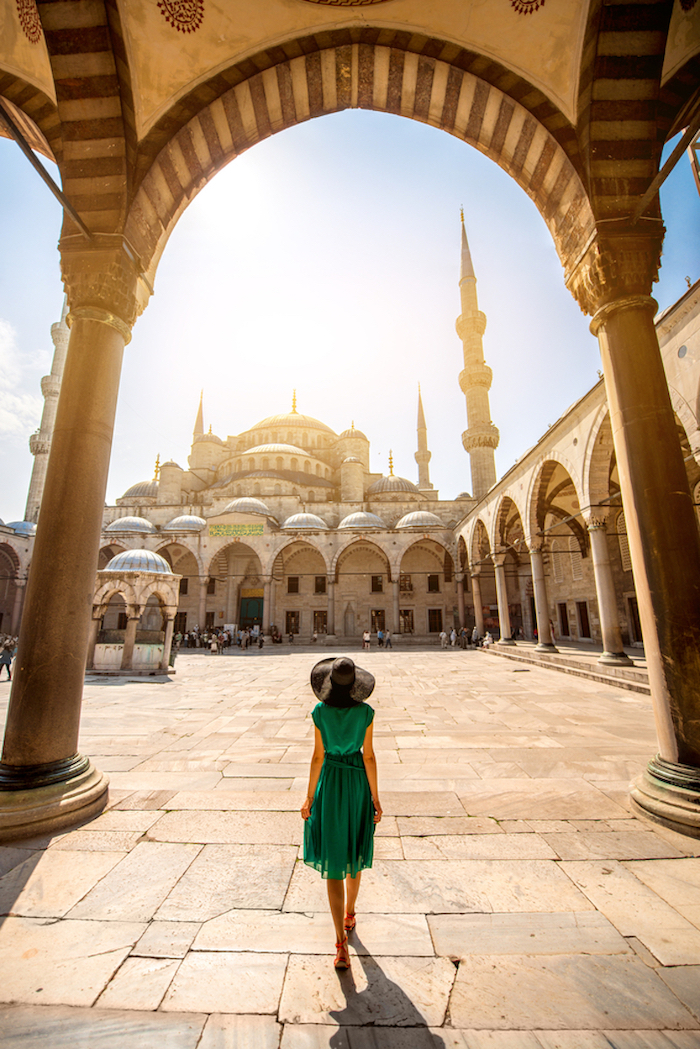
The dress code for visiting mosques is similar to that for churches or other religious buildings. Clean, modest dress is appreciated and often required when visiting mosques, including the Blue Mosque.
Generally, it is forbidden to enter mosques with any type of footwear. Since you cannot wear shoes inside, there are shoe racks where you can leave your shoes outside the mosques, or you can enter by holding them in your hand, and sometimes you may need to wear a covering for your shoes (plastic coverings with elastic that slip over the top).
However, it is not appropriate to enter mosques wearing shorts or tank tops, especially in summer. This means no wearing tank tops, crop tops, deep V-neck shirts, or other revealing clothes. Women should enter with a veil covering their shoulders and hair, and their legs should not be fully exposed. You should dress modestly in knee-length dresses, long skirts, or pants. It is usually possible to borrow or purchase a head covering at the most popular mosques in Istanbul. If you plan to visit mosques, you may consider taking a regular scarf in your bag which you can easily drape over your head and shoulders.
There are also dress codes for men. It is appropriate for men to wear at least a T-shirt and should also wear shorts that reach their knees. In winter, due to the cold weather, you will usually not have any problems entering mosques. There is typically no dress code for children.
This modest style of clothing may not be your everyday attire, but it is important that you respect Turkish people's culture as you are stepping into their sacred places of prayer. Read more about visiting the Blue Mosque.
Rural Areas
How to dress in rural areas may vary depending on the region you go to. For example, if you are going to the Aegean region or the Mediterranean, you can dress freely. However, if you are traveling to the Black Sea or Central Anatolia, where many Turkish women tend to have more modest dress customs and wear traditional clothes, you may prefer to cover up more. In more conservative provinces, you may prefer to wear slightly more modest clothing for your own comfort. However, you don't need to wear the long, wide-patterned combed shalwar (şalvar) worn by the women you can see in some villages in Central and Eastern Turkey, nor do you need to cover your hair. Western clothing is acceptable, but you may want to avoid revealing clothing in order to avoid unwanted attention.
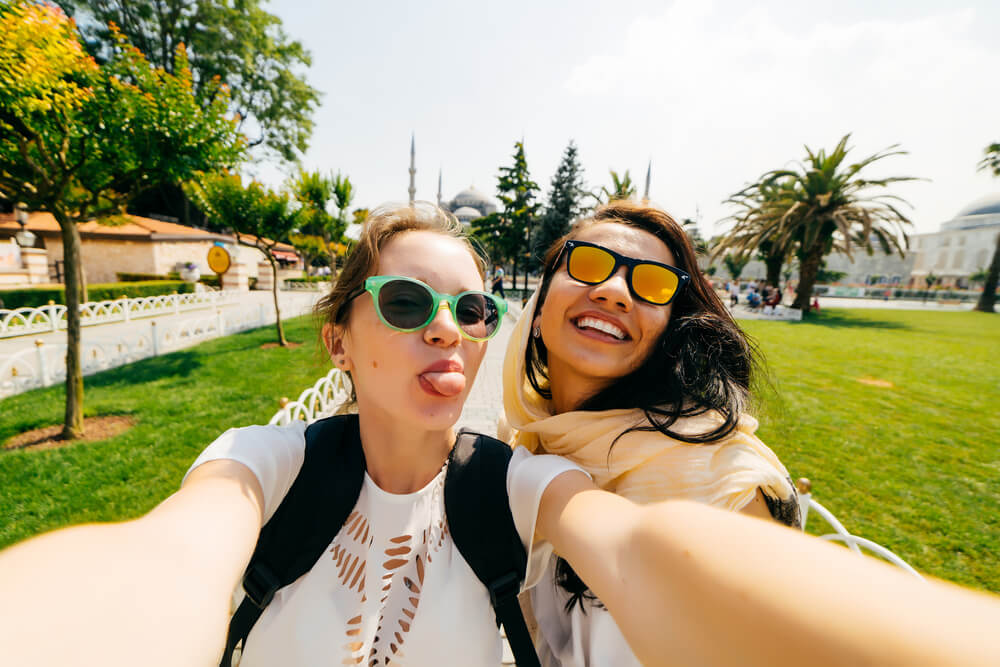
Conclusion
With the transition from the Ottoman Empire to the Turkish Republic, Turkish dressing styles have become more European. However, more conservative individuals may dress more modestly. You'll see many women in Turkey wearing headscarves, but you'll also see more avant-garde clothing styles and people who dress more openly. In this sense, Turkey is a mosaic of diverse styles. The important thing is mutual respect.
Turks are respectful of all types of dress, so prioritize your comfort. But of course, it's always necessary to be considerate of other cultures and lifestyles. Being dressed appropriately when visiting religious places and village settlements will make for a more pleasant visit. In a city like Istanbul, which hosts tourists from all over the world and where millions of diverse people coexist, choose clothing that make you feel comfortable and safe.
—by Tom Brosnahan, updated by Melike Kocaer



